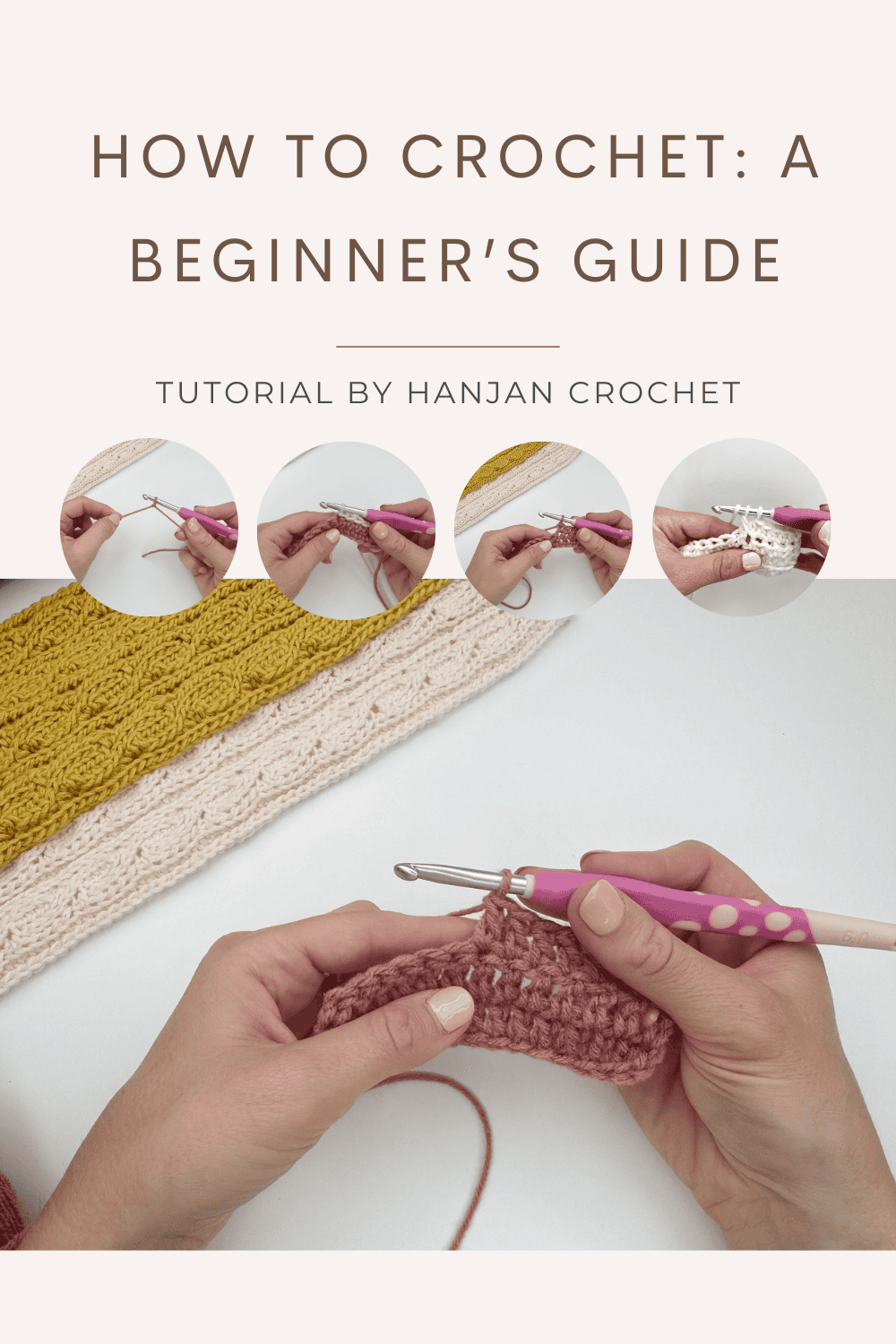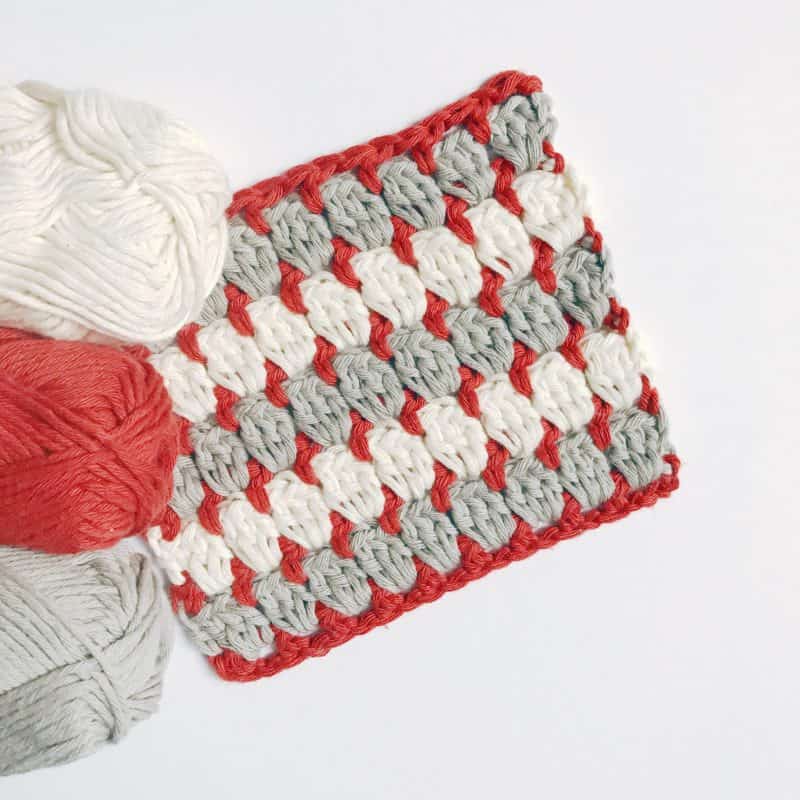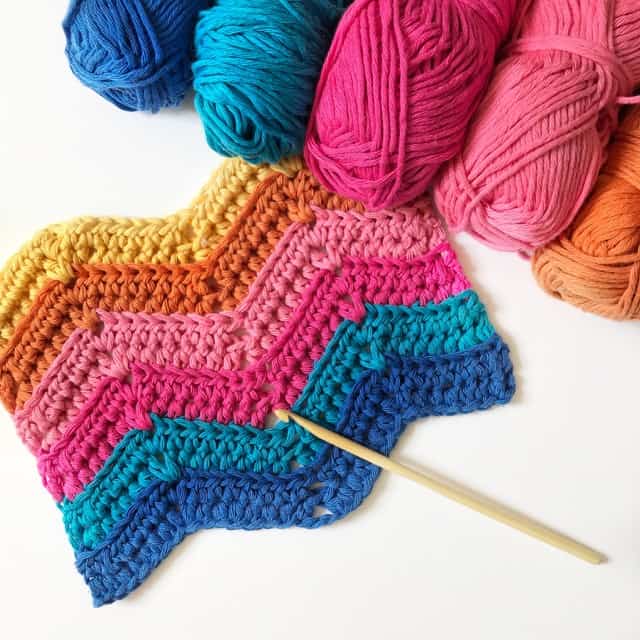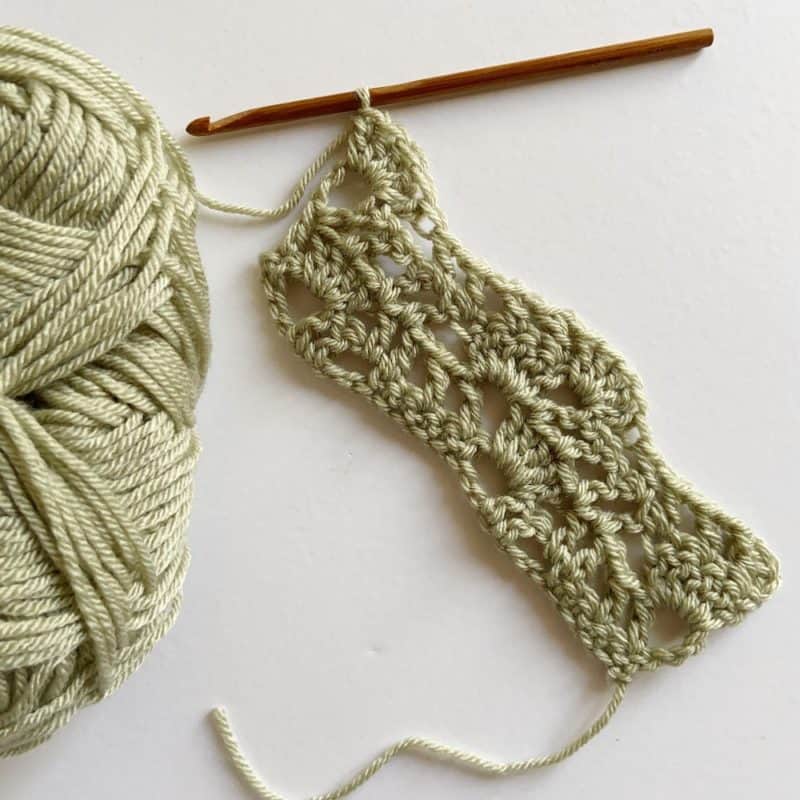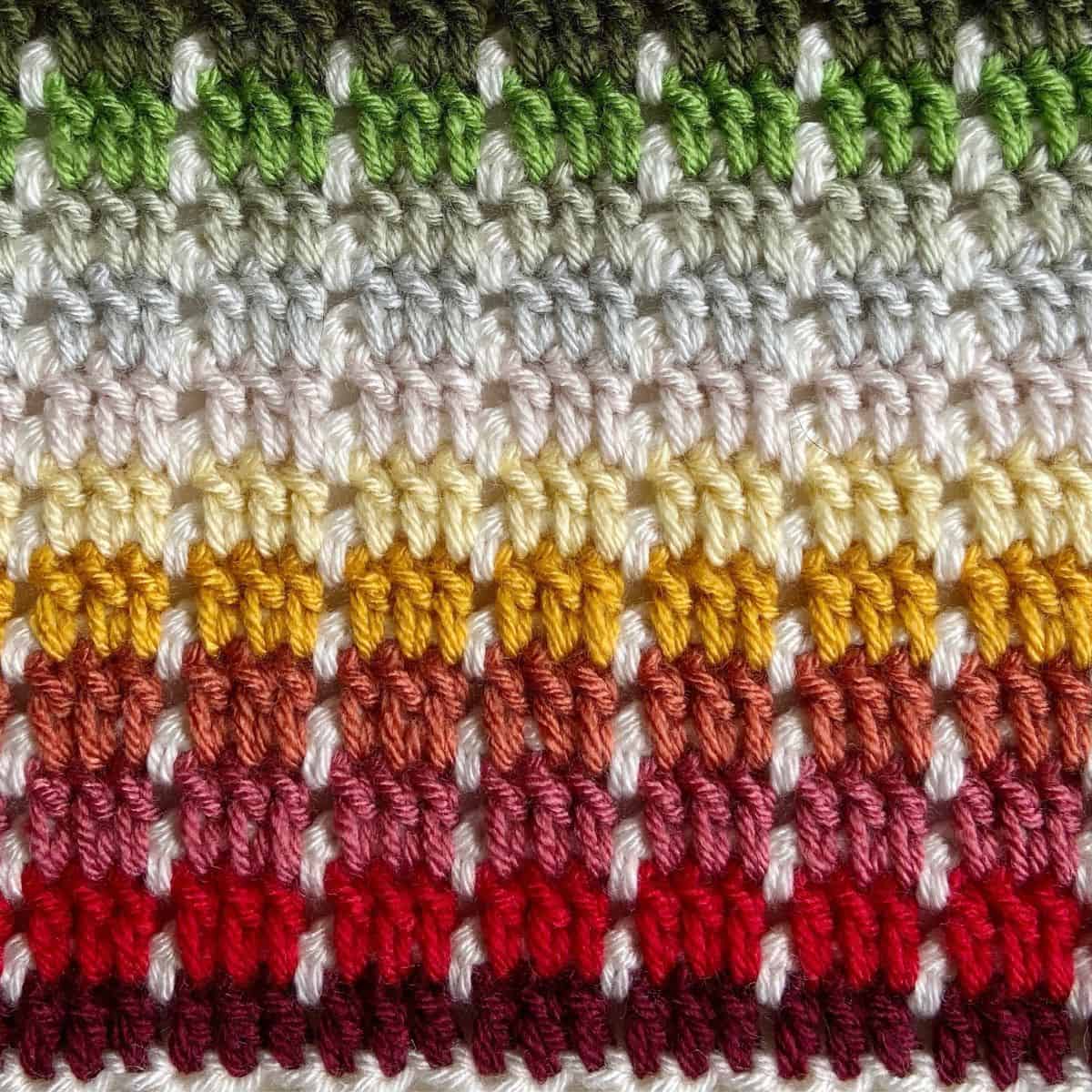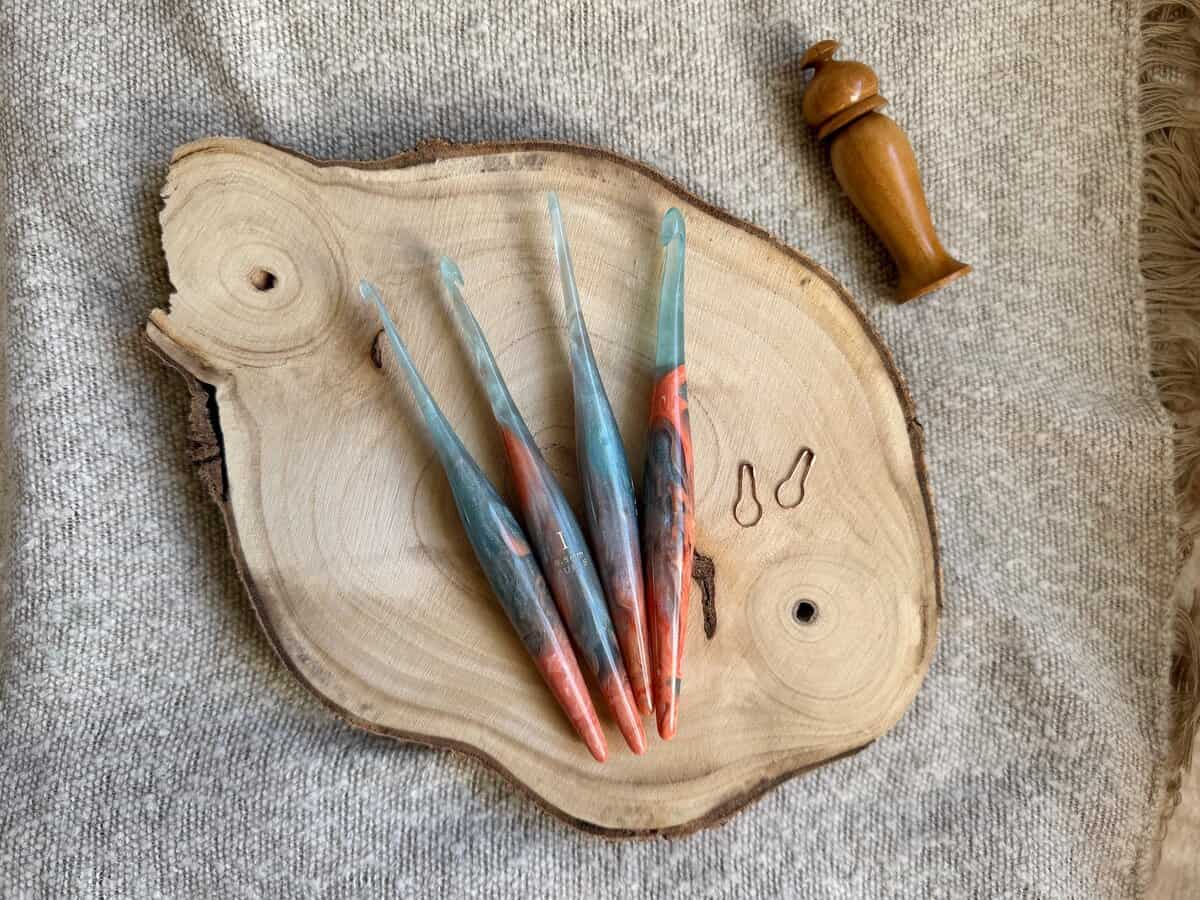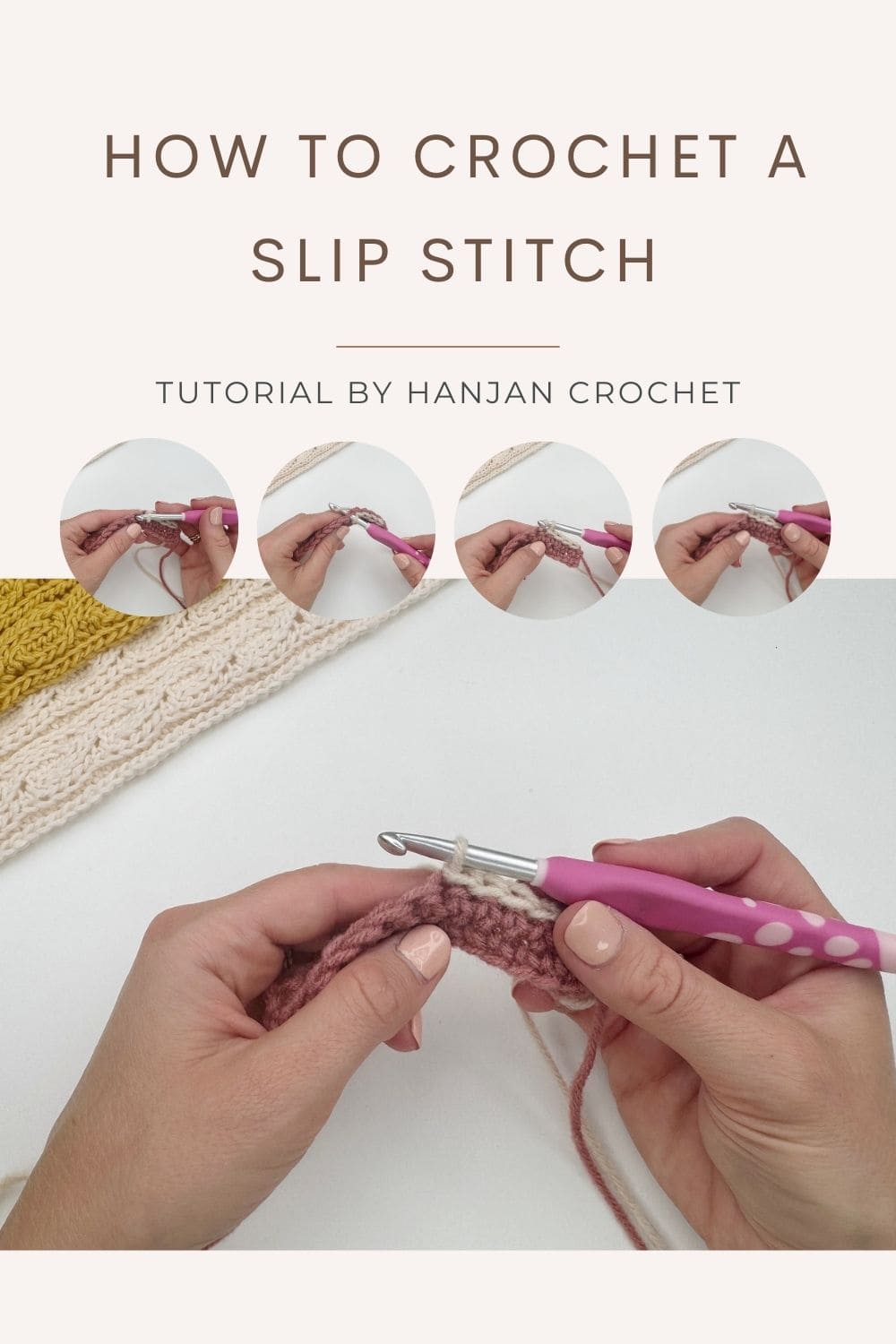This post may contain affiliate links. Please see my full disclosure and privacy policy for details.
Imagine turning a ball of yarn into something beautiful — a cosy blanket, a stylish bag, or even a tiny amigurumi animal — with just one simple tool. That’s the magic of learning how to crochet.
The best part? You don’t need fancy skills, expensive equipment, or years of practice to begin. In fact, by the end of this guide, you’ll know exactly how to hold your hook, work your first stitches, and start creating projects you’ll be proud of. Ready to make something amazing with your own two hands? Let’s dive in.
In this beginner’s guide, we’ll break down exactly how to crochet, from the very first steps to your very first completed pattern.
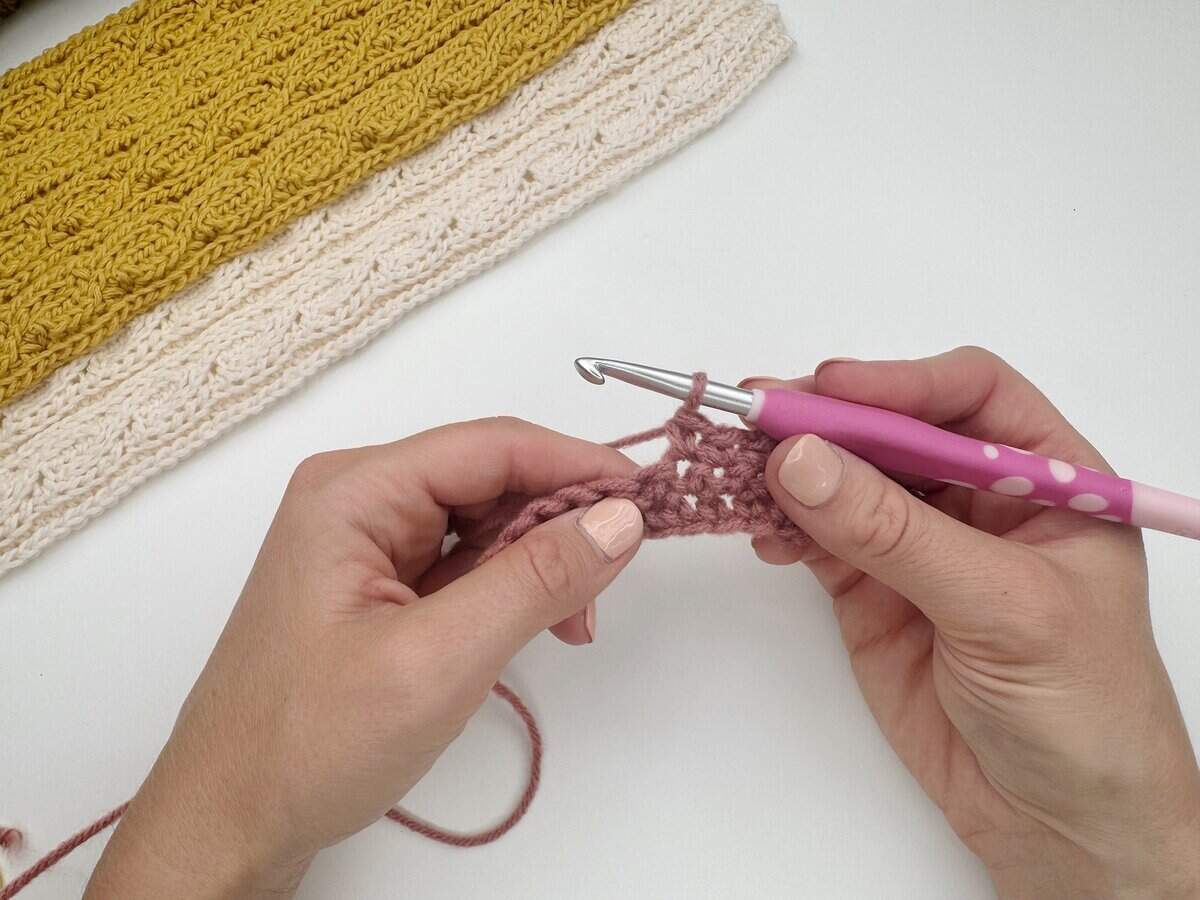
Table of Contents
What is Crochet
Crochet is a craft that uses a hook to create fabric from yarn or thread, one stitch at a time. Unlike knitting, which uses two needles, crochet works with just one hook, giving you more freedom to create intricate patterns, textures, and shapes.
From simple scarves and blankets to detailed lace and toys, crochet is a versatile skill that’s easy to start and endlessly rewarding to master. All you need is a hook, some yarn, and a few basic stitches to begin bringing your ideas to life.
What do I Need to Start Crocheting?
To start, all you need is a hook and some yarn. For beginners, I’d recommend using a category 4 or 5 weight yarn so you can see your stitches easily. Find out all about yarn weights and what they mean here.
If you only have one hook and ball of yarn though, just use what you’ve got. The important thing is to start crocheting!
You’ll need a corresponding crochet hook for the yarn you choose. If you look at the ball band, it usually gives you the recommended hook size. The hook I’m using is a Dots hook from WeCrochet.
There are a lot of different types of hooks available but I have a handy guide to crochet hook sizes that explains all about them.
Yarn
I used Wildflower Worsted by Herrschners in Rose Clover for most of the tutorial photos here which is a lovely, category 4 (worsted) weight yarn, 100% Acrylic, 448m, 489yds, 226g, but you can use any yarn that you like.
Once you’re hooked, there are a few other things you can get like stitch markers and a good pair of scissors, but to start a hook and yarn is all you’ll need.
How to Hold your Yarn and Hook
There are two basic ways to hold a crochet hook, but the most important thing is finding a way that’s comfortable for you.
Many crocheters use the pencil grip, holding the hook like a pencil, while others prefer the knife grip, holding it as you would a dinner knife. You hold the hook in your dominant hand.
The yarn is guided through your non-dominant hand, often looped around one or two fingers to control how easily it flows and again you’ll need to experiment to find a way that works for you.
This yarn control is called tension or gauge, and it plays a big role in how your stitches look and feel. If your tension is too tight, your stitches will be small and difficult to work into; too loose, and your fabric may look uneven or floppy. With practice, you’ll find a natural rhythm that produces even stitches and a comfortable flow of yarn.
Find out all about how to make a crochet gauge swatch and why it’s so important before you continue.
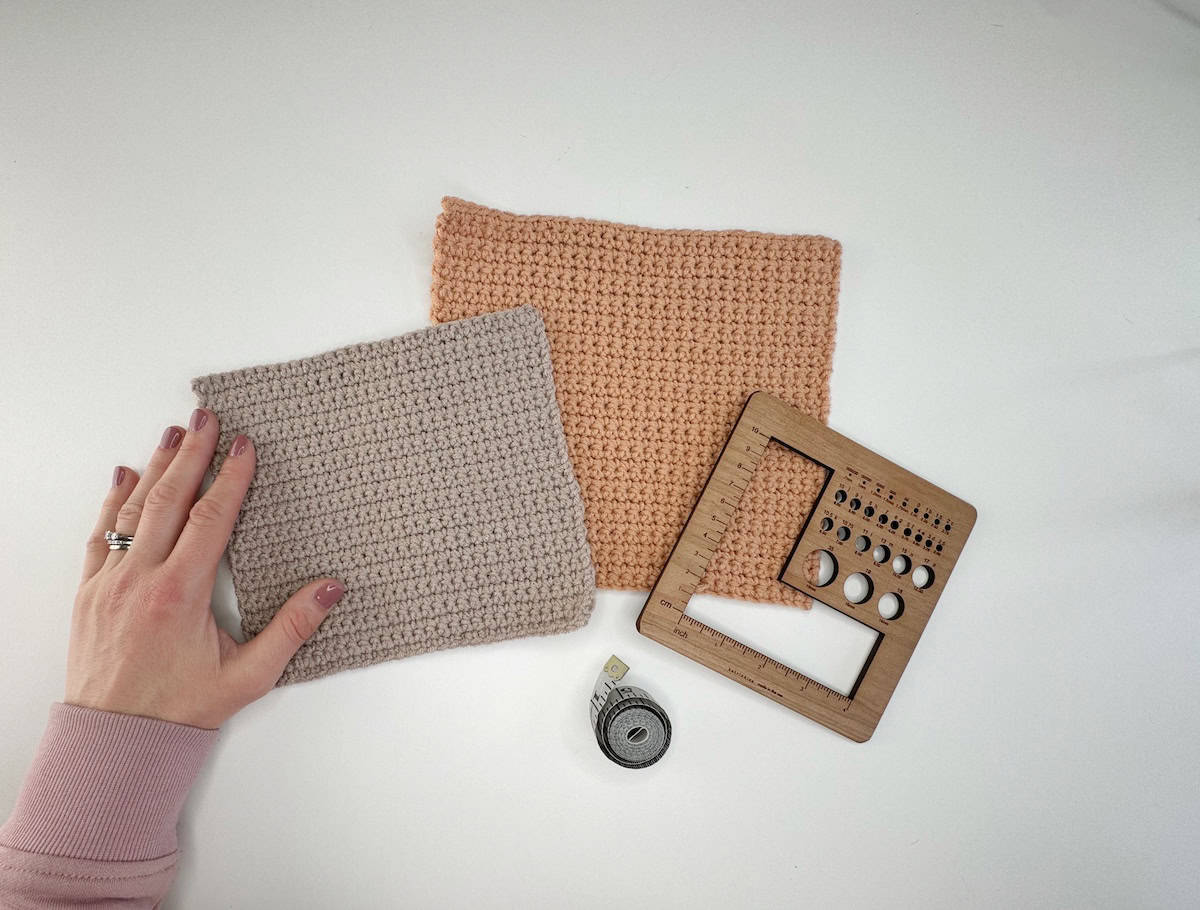
Your First Crochet Stitches
We’re now going to start learning some of the basic crochet stitches. Each stitch has its own separate blogpost devoted to it, so be sure to work through each one in order. That way you’ll have a really solid foundation for your crochet journey.
- how to make a slip knot – this is the first thing you need to be able to do, as this is what secures the yarn to your hook.
- how to crochet a chain stitch – chain stitches are used as a foundation for all subsequent rows to be built on top of.
- the single crochet stitch tutorial – this stitch is used in so many patterns in lots of different ways, so is fundamental to master.
- how to half double crochet stitch – the half double crochet is taller than the single crochet and creates a beautiful texture.
- how to do a double crochet stitch – taller again, the double crochet is used in so many different crochet techniques and patterns.
- how to crochet a slip stitch – this is the smallest stitch, used for things like joins and moving across a row
- front post and back post double crochet – these are a variation on the double crochet stitch, which is used to create texture, ribbing and cables.
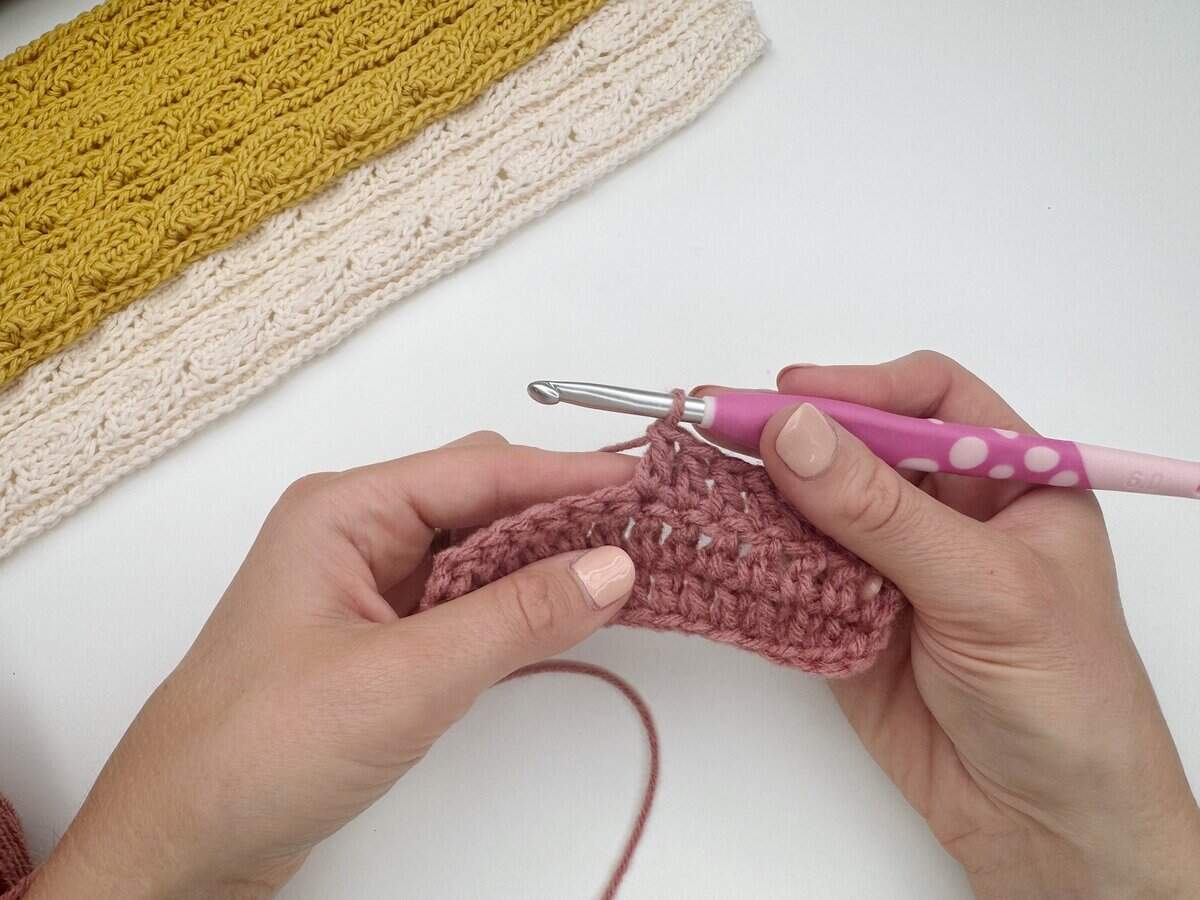
Understanding Basic Crochet Terms and Abbreviations
Crochet patterns use a mix of written words and abbreviations to keep instructions clear and concise. Unfortunately there are two different sets of crochet terms, US and UK, which can be confusing to start.
I use US terms throughout my patterns and in this tutorial series.
There are common abbreviations that you will come to know. For example, sc means single crochet in US terms (which is a double crochet (dc) in UK terms), and ch means chain in both.
Most patterns will list their abbreviations in a key at the start, and it’s important to check whether they use UK or US crochet terms, as the same abbreviation can mean different stitches. Learning these common terms early will make reading patterns much easier and help you follow along with tutorials confidently.
Common Crochet Abbreviations (UK & US)
| Abbreviation | US Term | UK Term |
|---|---|---|
| ch | chain | chain |
| sl st | slip stitch | slip stitch |
| sc | single crochet | double crochet (dc) |
| hdc | half double crochet | half treble crochet (htr) |
| dc | double crochet | treble crochet (tr) |
| tr | treble crochet | double treble crochet (dtr) |
| st(s) | stitch(es) | stitch(es) |
| rep | repeat | repeat |
| sp | space | space |
| yoh | yarn over hook | yarn round hook (yrh) |
Finishing Touches
After completing a project, there are a few things we need to do to make sure it really shines.
Firstly you’ll need to weave in all your ends. You don’t want it all unravelling after all of your hard work.
The second thing to do is blocking! This is a process whereby we gently dampen and shape our project. This allows the stitches to settle and open out, and also allows us to properly shape an item.
The easiest way to block a project is to pin it to shape on a foam mat and then spray it with water. Once dry unpin and see how your project has been transformed.
Top Tips for Learning to Crochet
- Take your time learning each step. Crochet is a slow craft and there is no rush at all.
- Make small swatches of each stitch so you have them for reference.
- Experiment with how you hold your yarn and hook, and how you create tension. You might find at the beginning that you are crocheting very tightly or very loosely. Keep practicing and find what’s comfortable.
- Most of all, enjoy it!
Beginner Crochet Projects
Now that you’ve learnt some of the stitches set out here, it’s a good idea to practice them by making something. Here are some beginner crochet patterns that I think you might like to try:
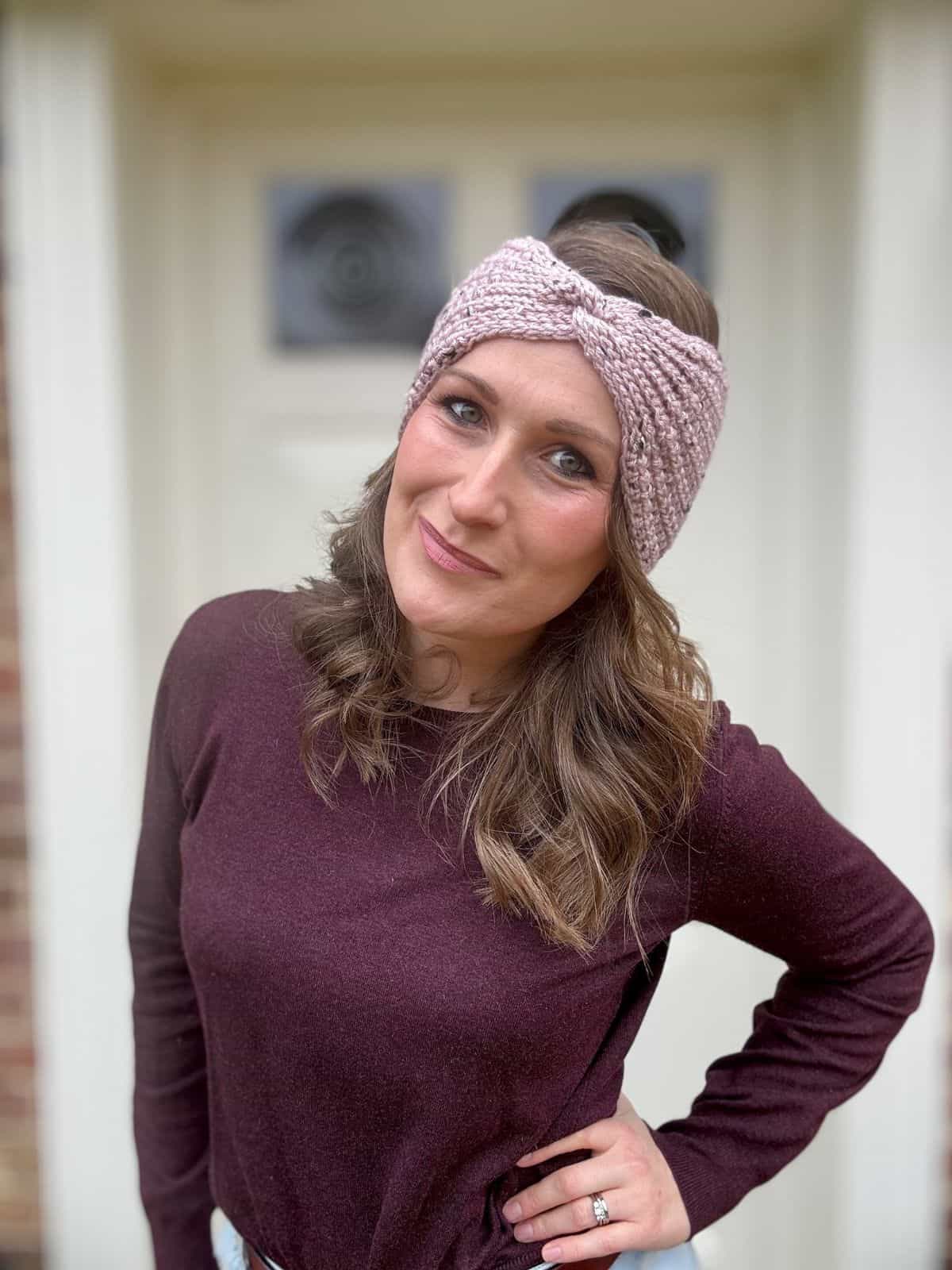
Stay warm and stylish this season with this Easy Crochet Ear Warmer Pattern! This cozy headband features a beautiful twisted design in the centre, making it both functional and fashionable.
It’s ideal for beginners, and is a quick and satisfying project to make at any time of the year.
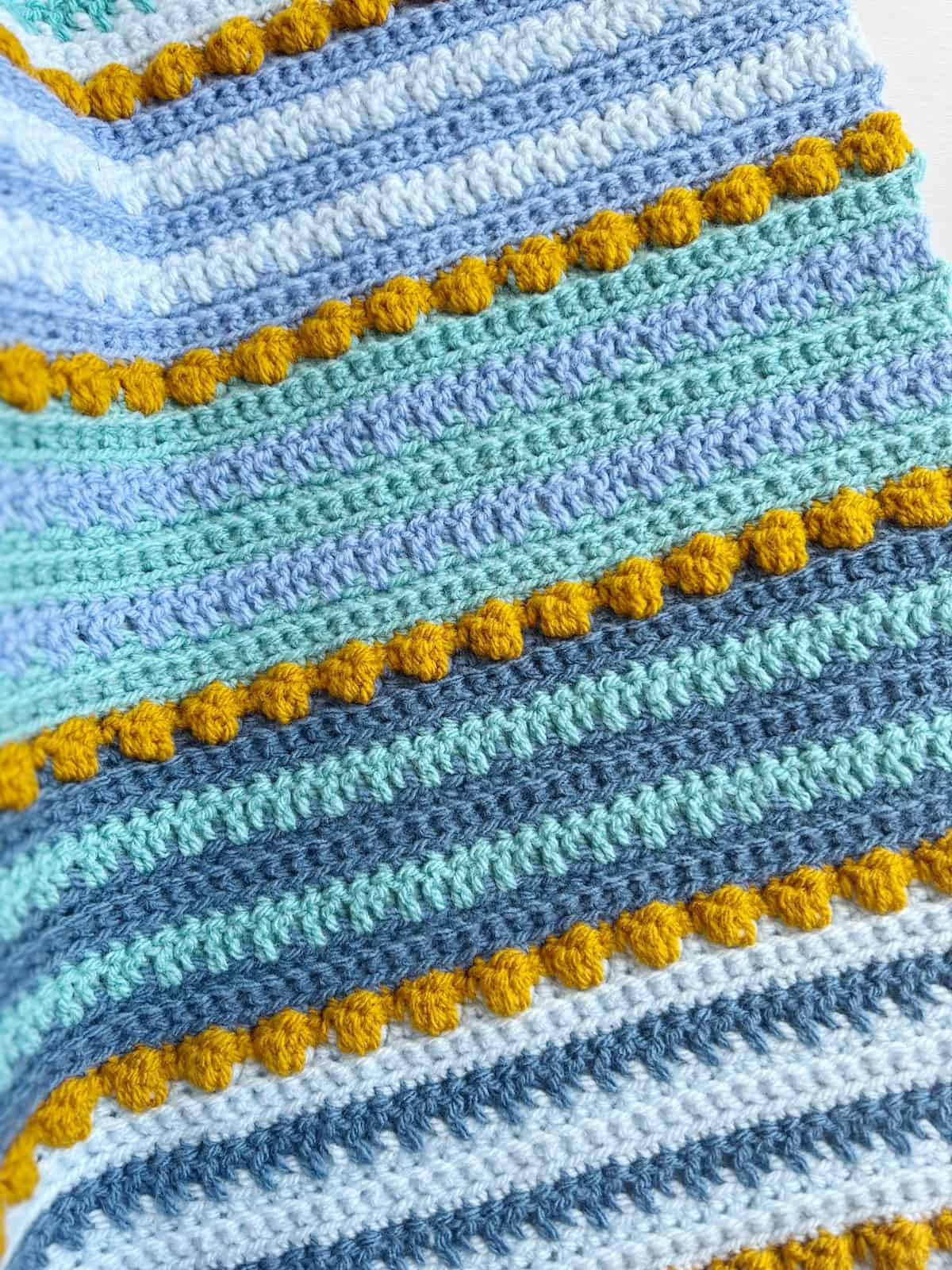
Beginner friendly patterns have always a joy to create for me and so I’m delighted to present my bobble stitch crochet blanket to you!
Made here in bright and bold colours, it is a modern baby blanket but you can use any colours you like to tone in with whoever you are making for (or whatever yarn you have in your stash!).
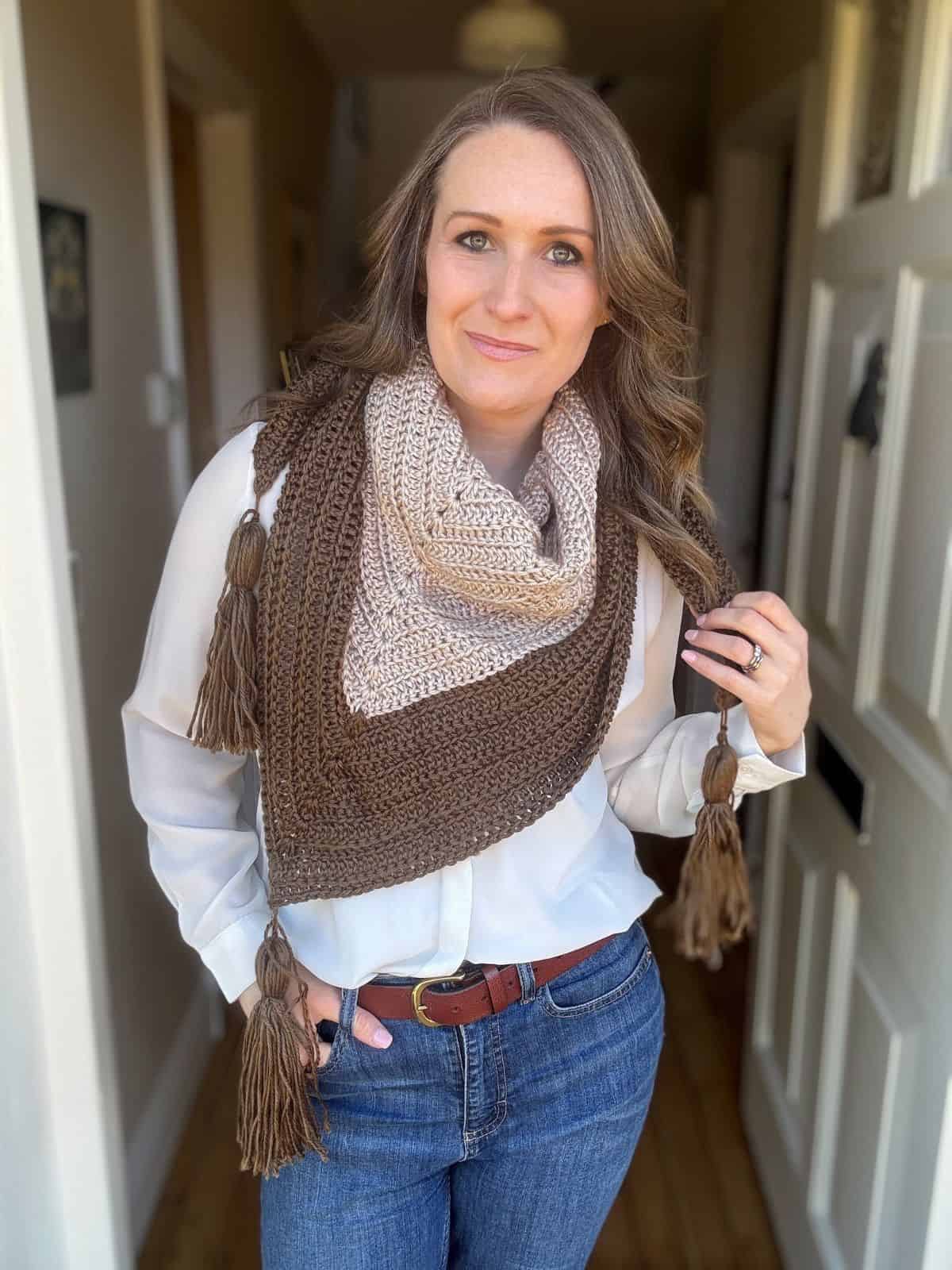
This easy triangle shawl crochet pattern is perfect for beginners! It’s worked up using just double crochet stitches with a little added texture to the stitch by using front or back loops.
You can make this triangle shawl in any size you like and it’ll definitely be a staple in your wardrobe once it’s ready.
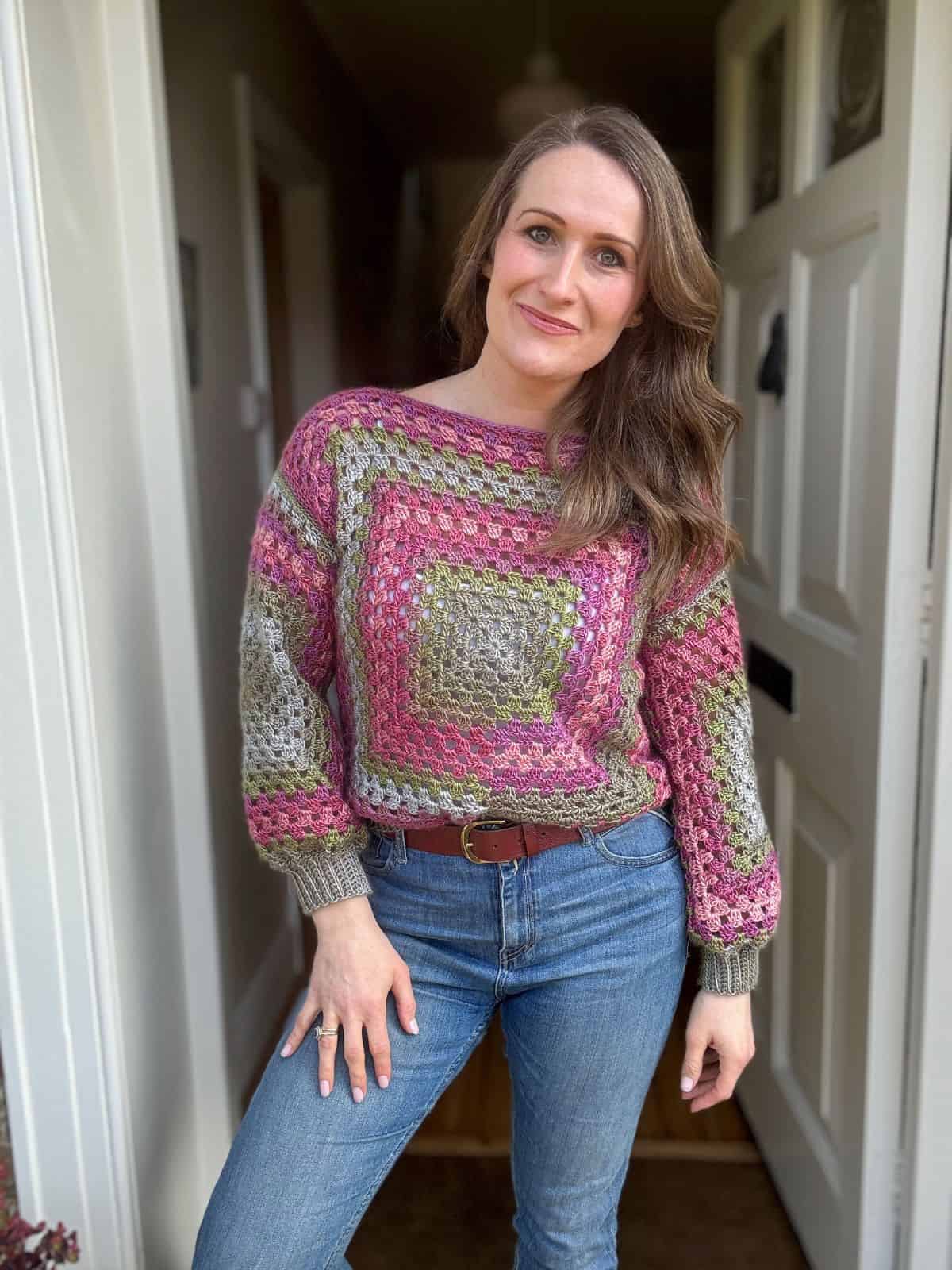
This granny square sweater pattern is easy to make and even easier to wear! Simply make four granny squares and seam them together to create a stunning crochet box sweater that you will wear every season.
Whilst a garment may seem daunting, this one is really very straightforward.
Next Steps in Your Crochet Journey
Now that you’ve mastered all of these beginner crochet stitches, you really are well on your way to becoming a pro crocheter! Why not check out some more of my beginner crochet patterns and see what you fancy having a go at making?
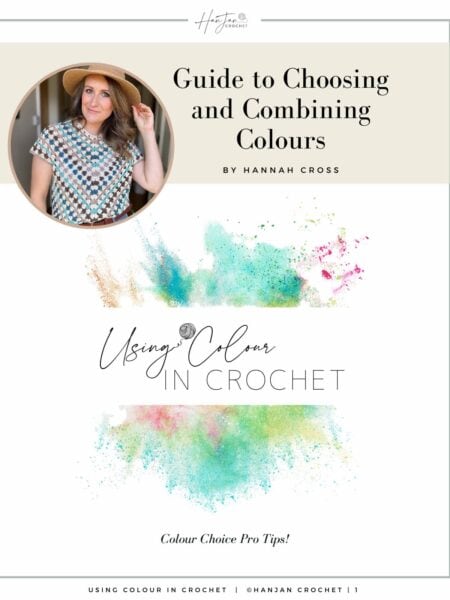
Get your free guide!
Subscribe to get your free guide to choosing and combining colours!
Learn Some More Stitches With Me
You’ve cracked the basics, so it’s time to learn some more crochet stitch tutorials – here are some of my favourite beginner stitches:
35 Easy Crochet Stitches for Beginners
I hope you’ve enjoyed learning how to crochet with me! I really hope you’ve caught the crochet bug and I’d love to share in your crochet journey with you! You can sign up to become a member of HanJan Crochet and I’ll let you know about all the fabulous crochet adventures, offers, lives and more too!
See you there!
Join our community group!
We’ve built an amazing community always ready to help each other. Join today!
Pin It For Later
